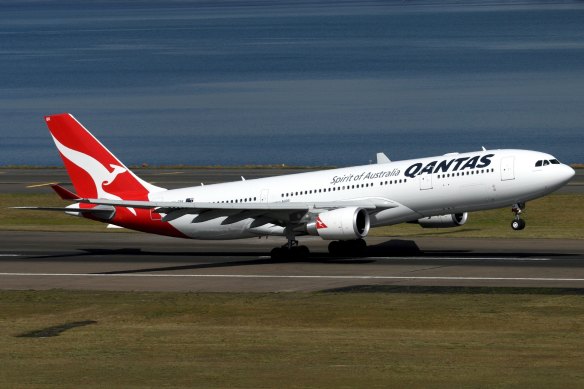Opinion
Why did Qantas cancel a popular route? The right passengers weren’t flying
Michael Gebicki
The TripologistQantas recently announced the cessation of its Sydney to Seoul flights from June 2025. The airline resumed its flights to South Korea only after the pandemic, 15 years after pulling the plug on its initial Sydney-Seoul flights.
It’s not a complete withdrawal. Qantas is handing the service to Jetstar, which will offer increased capacity on the route, with daily flights instead of the four per week that Qantas operates. The three flights per week that Jetstar operates between Brisbane and Seoul will be unaffected.

Qantas’ Airbus A330s have been replaced on its Sydney-Seoul route by increased flights from Jetstar Boeing 787s.
According to Qantas, this will add 100,000 seats per annum to the Australia-Korea route. In another win for flyers, the Airbus A330 that Qantas uses for its South Korean flights will be replaced by Jetstar’s Boeing 787s, resulting in a more satisfying passenger experience.
The robust demand for Qantas’ South Korea flights, however, was dominated by the back end of the aircraft. Korean business flyers show a strong preference for flying with their own airlines. Qantas was unable to attract the high-paying business-class flyers to the service, and therefore the switch to leisure airline Jetstar was the best option.
Establishing a route between city pairs requires major investment. Negotiating a slot, advertising and marketing, liaison with local authorities, contracts for ramp, handling and catering, aircraft servicing and demand assessment, and revenue projections are all part of the process. The decision to drop that route is not taken lightly.
Like any other business, airlines need to deploy resources to maximise returns. If a route doesn’t live up to its promise, as has happened for Qantas with Seoul, or if demand slackens with no prospect of recovery, an airline will cut its losses and look to redeploy its aircraft to other routes where it can maximise its return on investment.
Politics, war and COVID-19
At the end of 2019, Finnair operated 42 non-stop flights per week between Helsinki and China. Today that number has shrunk to just a handful, according to Cirium Diio data. The onset of COVID-19 put a brake on Finnair’s China flights, but when Russia invaded Ukraine early in 2022, its fate was sealed.
As the West howled its outrage, Russia retaliated, closing its airspace to most Western airlines. Instead of traversing Russian airspace on a direct flight across Russia, Finnair was forced to reroute its China flights across Turkey and Kazakhstan. What had been an 8½-hour flight became an 11½-hour flight, which massively increased fuel costs, causing Finnair to slash Far East services. Today the carrier operates a daily service to Hong Kong, but only three flights per week to Shanghai.
The Middle East is particularly susceptible to violent flare-ups that cause airlines to cease flights to the region. The ongoing conflict has had a heavy impact on flights to Tel Aviv in Israel, Beirut in Lebanon and Amman in Jordan.
Before that conflict, inbound and outbound passenger traffic to Israel benefited from a thaw in relations with the UAE, after which several airlines launched services between the two states. Over the summer of 2023, there were more than 2100 flights between Tel Aviv and the UAE. That number has shrunk considerably, although it’s likely that flights will increase when hostilities finally end.
By contrast, just a few years ago, relations between Qatar and the other states of the Arabian Peninsula were so frosty that Qatar Airlines aircraft were forced to fly a roundabout route to and from Europe to avoid Saudi Arabian airspace.
The breach has been healed, and over the northern summer of 2024, there were almost 5000 flights between Doha and cities in Saudi Arabia.
When one door closes, another might open
That’s what’s happened for Qantas. Nauru Airlines announced its Brisbane-Palau service would end in November when its contract with Australia’s Department of Foreign Affairs and Trade (DFAT) expires.
Nauru Airlines only began the so-called “Palau Paradise Express” in May, at the behest of DFAT, and now Qantas will take up the route. The national carrier will operate one weekly 737 flight per week, also partially financed by DFAT, to support trade and tourism links between Australia and Palau and to counter China’s growing influence in the Pacific islands.
Airlines constantly assess each route they fly, comparing the revenue per mile from each and even resizing their fleets when opportunity knocks – or walks out the door.
I recently flew from Casablanca to Rome. Although the booking was with Royal Air Maroc, the flight was aboard an Electra Airways A320-200, wet-leased (industry-speak for a short-term lease), including crew, from the Bulgarian-based charter operator, since the Moroccan airline needs to fill gaps to take advantage of increased traffic from Europe in the peak October-December period.
Sign up for the Traveller newsletter
The latest travel news, tips and inspiration delivered to your inbox. Sign up now.